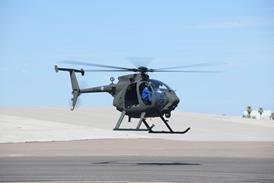Overall profits from the major US airline groups continued to forge ahead in the first quarter of 1997, shrugging aside the hike in fuel costs and re-imposition of the 10% federal ticket tax in early March.
The leading airlines made a combined profit of over $750 million, more than doubling the total of a year ago in one of the industry's traditionally weak quarters. Two years ago, the airlines lost close to $500 million in the first quarter.
The profits are helped by a buoyant US passenger market that shows few signs of tailing off. Average traffic growth year-on-year remained above 7%, continuing the boom seen at the end of 1996: the largely domestic operations of America West, US Airways and Southwest Airlines showed the biggest gains. With capacity growth still restrained, load factors again rose to reach 68.6%.
Airlines are relatively upbeat over the prospects for a further, although more modest, improvement in the second quarter, as the US market remains strong.
Southwest chairman Herb Kelleher added his superlatives to the "splendid" first-quarter performance, but warned the re-imposition of the ticket tax could affect second-quarter revenues.
Northwest Airlines says it expects little improvement in fuel prices or in the weakness of the yen, which has depressed transpacific fares. Northwest's growth will also be hampered by late delivery of five new widebodied aircraft.
Yields also continued to rise in the first quarter, although costs too have been edging up, largely due to the hike in fuel prices, which are up by around 20%after the mid-1996 rise. Underlying seat costs have largely been stable.
Despite profits elsewhere, Trans World Airways (TWA)continues to struggle, turning in a net loss of $72 million. The carrier's cash balances ended March at less than $137 million, raising further concerns over its future. The result, however, marks a big improvement on the huge losses recorded at the end of 1996 and chairman Gerald Gitner says the airline ended the Ìrst quarter ahead of plan.
TWA's traffic was down as the airline tackled the replacement of its ageing widebody fleet with smaller and more efficient Boeing 767 and 757 aircraft. Part of the narrowbody fleet was also taken out for early maintenance to ensure capacity in the peak travel season. Cost reduction and improved schedule reliability are the main focus, says Gitner.
Some of the shine was also taken off the results at American Airlines and US Airways (formerly USAir) by tense labour negotiations. Bob Crandall, chairman of American's parent AMR group, admits that net profit, which took a slight dip in the quarter, would have been "dramatically better" but for the dispute with pilots. The group also put aside $20 million to cover the discount share options on offer to pilots as part of the settlement.
US Airways chairman Stephen Wolf continued to exert pressure to cut costs at the airline, warning that despite record results, losses persist in key markets. He says that while the carrier wants to become a "major international competitor", if cost structures cannot be reduced "the other path leads to the company becoming a smaller, regional carrier".
Elsewhere, the star performance came from Delta, which turned in net profits of $221 million despite a $53 million charge to carry out realignment of its transatlantic operation - one of the last elements of its restructuring. Chairman Ron Allen pledges to keep Delta as "the low cost network carrier", although the "7.5 programme", designed to push seat costs below ó4.7 per available kilometre (ó7.5 per mile), was abandoned last year.
Continental produced another strong performance and continues to shore up its finances. In April the carrier secured a $160 million credit facility to fund pre-delivery payments for its new Boeing aircraft orders and sealed a $190 million bond issue to expand its hub in Houston, Texas. Continental, which proved its skill in hedging by anticipating the fuel price rise last year, says it locked in close to $1 billion in financing ahead of the rise in US interest rates.
How much longer the traffic boom continues depends on the US economy, which has had an unprecedented spell of growth and is still rising at around 5% on latest figures. Economics dictates that it must eventually slow, but when?
Source: Flight International























